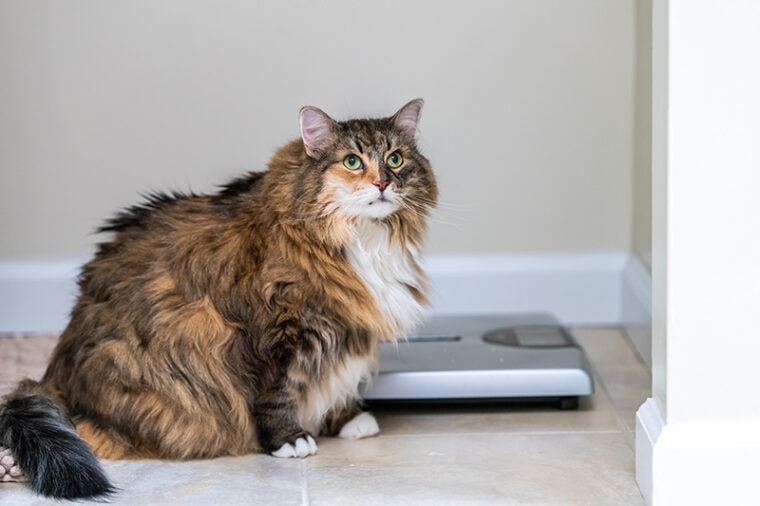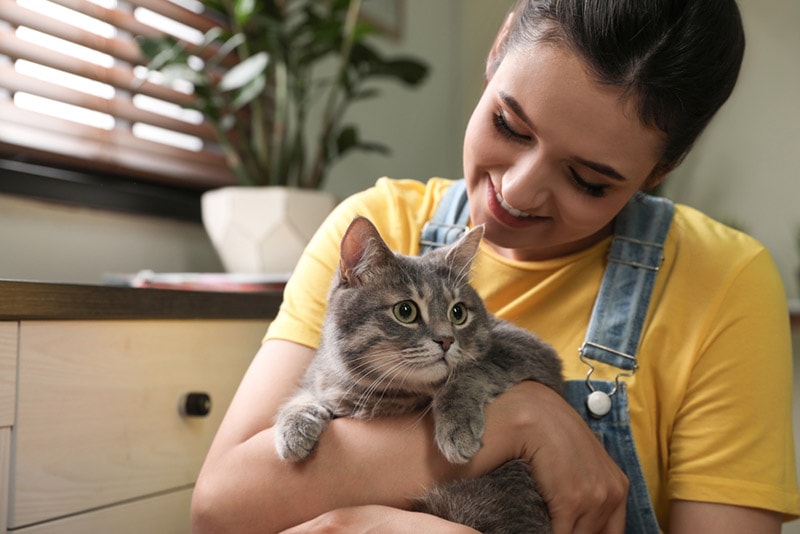
There are many reasons why you may need to weigh your cat. It could be to keep track of their weight gain in an attempt to help them gain or lose weight. You may want to find out their weight so that you know how much medicine or food to give them. Regardless of the reason, it is a way to keep an eye on your cat’s health in a more precise way than judging off their appearance.
Knowing how to weigh your cat is the tricky part. Not many cats are happy to be placed on a cold scale and sit there patiently while you jot down their measurement. Taking your cat to the vet is one way to determine their weight, but that takes time, effort, and money. Weighing your cat at home can be done more frequently and is often the easier option. Below are a few tips on how you can accurately weigh your cat at home.
The 5 Steps to Weigh Your Cat at Home
1. Cuddle Your Cat
Doing anything out of your cat’s routine can be a bit stressful for anxious personalities. A usually relaxed cat may start to get frantic when picked up to be weighed, which may result in an inaccurate reading. Start off by holding your cat, stroking them, and speaking softly to them so that they relax in your arms.

2. Use a Quiet Room
A loud and busy environment may feel overwhelming for your cat, so place your scale in a quiet room, separate from other pets, children, and noise. For an accurate reading, you and your cat need to be still, so the less chaotic the environment, the better.
3. Use Your Bathroom Scale
If you don’t have a fancy pet scale, don’t worry! There is no need to go out and buy one if you have a bathroom scale at home. Place your scale in your quiet room and stand on it with your kitty, jotting down the combined weight.

4. Weigh Yourself
You’ll need to repeat the last step, but this time without your cat in your arms. You can place them beside you on the floor or let them run out of the room as their part in this process is complete. Get on the scale alone and record your weight.
5. Do a Bit of Math
Unfortunately (or maybe fortunately for the math boffins), this step requires a bit of math, so whip out your calculator or paper and pencil! You will need to subtract your weight from the weight you recorded while holding your cat. The result will be your cat’s weight.
Alternative Ways to Weigh Your Cat at Home
Depending on how anxious your cat is, your cat’s energy level, and the equipment you have at home, you can try out a few alternative options to weigh your cat.
1. Use a Cat Carrier
If your cat will not settle in your arms and is causing the readings to be inconsistent, you can opt to use their cat carrier. The process is similar to the guide above, except this time, you’ll hold your cat in the carrier instead of in your arms or place cat in carrier on the scale.
Once you have the combined weight, release your cat and weigh yourself, holding the empty cat carrier (or similarly, weigh the empty carrier). Subtract the last reading from the first, and the result will be your cat’s weight.

2. Place Them on The Scale
If you have a baby scale, pet scale, or just a simple bathroom scale and your cat is happy to sit still on it by themselves, then use this method because it is the fastest and easiest option.
A baby scale or pet scale will provide you with the most accurate measurements because it is very sensitive to lighter weights. All you need to do is turn the scale on and place your cat on it. The number that it stops on is your cat’s body weight.
3. Use a Luggage Scale
A luggage scale is another good option for cats who won’t sit still long enough for you to get their weight from the bathroom scale. This type of scale has a hook to which a bag or carrier can be attached. The scale will read the weight of whatever the hook is holding.
You can place your cat into a cat backpack or carrier, place it on the hook, and take down the measurement. You’ll need to repeat the step with the empty bag or carrier. Subtract the two measurements, and you’ll be left with your cat’s weight.
Conclusion
You may want to weigh your cat to keep an eye on their health or because you’re curious about what it is. Thankfully, weighing your cat can be done at home in a few simple steps. You can use a bathroom scale, a luggage scale, a baby scale, or a pet scale if you have one.
Holding your cat on the scale is one of the best methods to use, but there are several others if it doesn’t work well for you or your cat.
Featured Image Credit: Andriy Blokhin, Shutterstock








